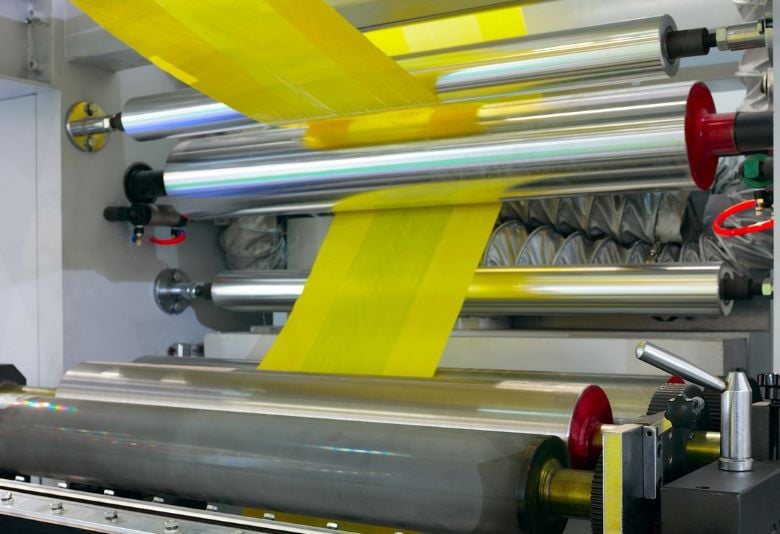The future of flexographic printing is a topic of great interest, especially as technological advancements continue to reshape the landscape. As we look ahead, it’s essential to understand how these changes will impact the printing industry and what it means for professionals involved.
Flexographic printing, known for its versatility and efficiency, has been a preferred choice for packaging and label printing. With the advent of new technologies, the industry is poised to experience significant transformations. In this article, we will delve into the key factors shaping the future of this dynamic field.

Current State of Flexographic Printing
Before we explore the future, let’s take a moment to understand the current state of flexographic printing. This printing technique is widely used for high-volume jobs and is known for its speed, cost-effectiveness, and ability to print on a variety of substrates. However, like any other industry, it faces challenges such as maintaining quality and staying competitive against digital printing technologies.
Technological Advancements in Flexography
One of the most significant factors influencing the future of flexographic printing is technological advancement. Innovations in plate-making, ink formulations, and press technology are enhancing the quality and efficiency of flexo printing. The integration of AI in flexographic printing is also starting to play a crucial role, optimizing processes and reducing errors.
Digital Enhancements
The line between digital and flexographic printing is blurring. Hybrid presses that combine both technologies are becoming more common, allowing for greater flexibility and customization. These advancements are essential for meeting the demands of modern consumers who seek personalized and high-quality products.
Sustainability in Flexographic Printing
As environmental concerns continue to grow, sustainability has become a critical focus area for the printing industry. The future of flexographic printing will likely involve further developments in eco-friendly practices. From biodegradable inks to energy-efficient presses, the industry is moving towards reducing its ecological footprint.
Eco-friendly Inks and Materials
One way the industry is addressing sustainability is through the use of eco-friendly inks and materials. Water-based inks and recyclable substrates are becoming more prevalent, helping to minimize the environmental impact of printing processes.
Market Demands and Consumer Trends
The market for printed products is continually evolving. As consumer preferences shift towards more personalized and sustainable products, the flexographic printing industry must adapt. Understanding these trends is crucial for businesses looking to stay competitive.
Customization and Personalization
Consumers today expect products that cater to their individual tastes and preferences. This trend is driving the demand for customized packaging and labels, which can be effectively produced using flexographic printing techniques.
Challenges and Opportunities for Flexographic Printing
While the future holds many exciting opportunities, there are also challenges that the industry must address. Competition from digital printing, the need for skilled labor, and maintaining quality while reducing costs are some of the hurdles that lie ahead.
Maintaining Quality and Consistency
Ensuring consistent quality across large print runs is a challenge for any printing process. Innovations in bar marking in flexo and other quality control measures are essential for overcoming this issue.
The Role of Automation
Automation is set to play a pivotal role in the future of flexographic printing. From automated press setup to real-time monitoring, these technologies can significantly enhance efficiency and reduce human error.
Streamlining Production
Automated systems can streamline production processes, allowing for faster turnaround times and increased productivity. This is particularly important in an industry where time-to-market is a critical factor.
Training and Skill Development
As the industry evolves, so too does the need for skilled professionals. Training and skill development will be crucial for ensuring that the workforce is equipped to handle new technologies and processes.
Embracing New Technologies
Training programs focused on the latest technologies and techniques can help bridge the skills gap and prepare professionals for the future. This is vital for staying competitive in a rapidly changing industry.
Conclusion
The future of flexographic printing is bright, filled with opportunities for innovation and growth. By embracing technological advancements, focusing on sustainability, and adapting to market demands, the industry can continue to thrive. For more insights into the flexographic printing process, you can visit this external resource.

FAQ Section
What is the primary advantage of flexographic printing?
The primary advantage of flexographic printing is its ability to print on a wide range of substrates at high speeds, making it ideal for large-volume production runs.
How is sustainability being addressed in flexographic printing?
Sustainability is being addressed through the use of eco-friendly inks and materials, as well as energy-efficient technologies, which help reduce the environmental impact of printing processes.
What role does automation play in the future of flexographic printing?
Automation plays a crucial role by streamlining production processes, reducing human error, and increasing overall efficiency, ultimately enhancing productivity and competitiveness.






